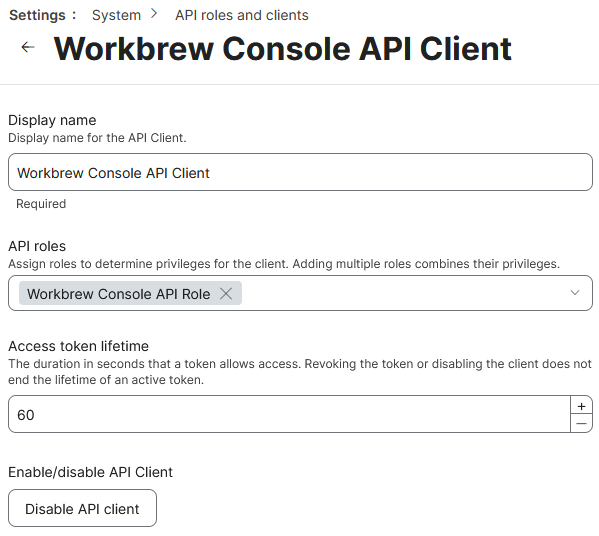

Workbrew streamlines secure, automated Homebrew package deployment for macOS, integrating seamlessly with Jamf Pro to give IT teams centralized device management. Homebrew is the de-factor package manager on macOS, installed on tens of millions of devices and offering more than 15,000 packages. With zero-touch deployment, policy enforcement, and real-time monitoring, Workbrew lets you leverage the power of Homebrew, whilst ensuring compliance and eliminating security risks.
By the end of this deployment guide you will:
Before you begin following this guide, you should:
Are you an experienced Jamf administrator? These steps will get you up and going quickly. Read on for more detailed explanations.
Workbrew is installed using a signed .pkg file, which installs several components:
In addition to installing the Workbrew .pkg on each device, you must run a (bash) script which connects the Workbrew agent to your Workbrew Console. The script also installs Command Line Tools for Xcode if your devices do not already have it. The Workbrew Console connection wizard will guide you through customization to your install script.
You can deploy the Workbrew .pkg through Package Deployment, using the Policy detailed in the following. You can use this Policy to deploy Workbrew to your devices, or enable Self-Service to allow users to install at their leisure.
In brief, you will perform these steps to ready Workbrew for deployment:
To populate your Workbrew Console with information about your devices and users, Workbrew requires Read-Only API access to your Jamf Pro instance. In this section, you will create an API Role and Client with sufficient permissions and retain the credentials for input into Workbrew.
To complete this step, follow the instructions in the Jamf Pro documentation to creating an API Role, an API Client, and a Client Secret, with the following additions:



The Client ID and Secret created in the previous step will allow Workbrew to read from your Jamf Pro instance using the API. In this section, you will register Jamf as your MDM of choice within Workbrew.

The Workbrew Workspace API key and installation script saved in the previous step prepares the device for a Workbrew installation, setting environment variables for workspace directories and the Workbrew Workspace API key. It also installs a Homebrew dependency, Command Line Tools for Xcode, using MacOS’s `softwareupdate` utility. In this section, you will add the script to Jamf Pro so that it can be run as part of the Workbrew installation Policy.

Follow the steps under Adding a Script to Jamf Pro with the following additions:
The Workbrew .pkg installs Workbrew, including the agent, CLI, and Homebrew. In this section, you will add the package to Jamf Pro so that it can be distributed as part of the Workbrew installation policy.
Download the package, and then follow the steps under Uploading a package to Jamf Pro with the following additions:
5. Select Choose File and choose the Workbrew .pkg.
The script and package will be deployed through a Jamf Policy. In this step, you will create a policy and choose to either deploy it immediately through the Policy scope, or enable self-service.
Follow the steps from Creating a Policy with the following additions:

Once you have created the policy, you may want to deploy to one or more devices to test the deployment and ensure devices connect to Workbrew and are visible in the console. Workbrew devices check-in on a periodic basis, so it may take a little while for a new device to appear in your console.

Workbrew simplifies large-scale device management through integrations with MDM provders SimpleMDM, Jamf, Kandji, and Fleet.
Read More